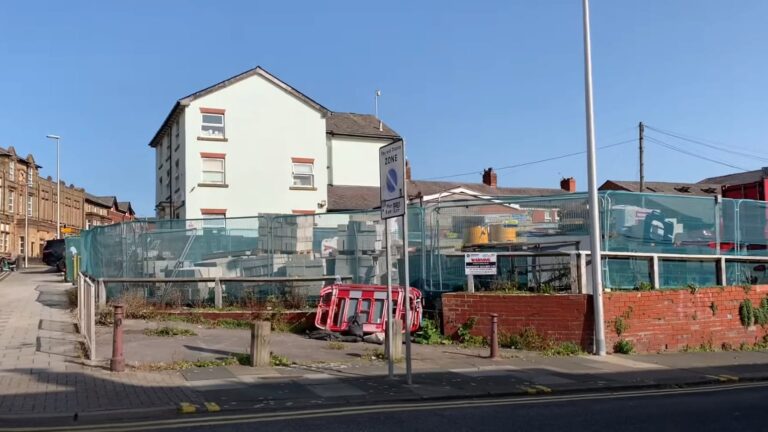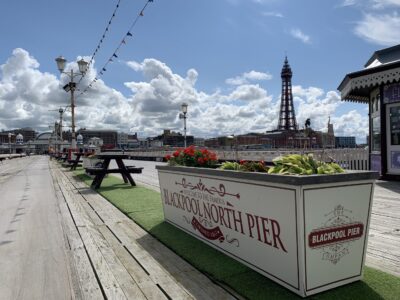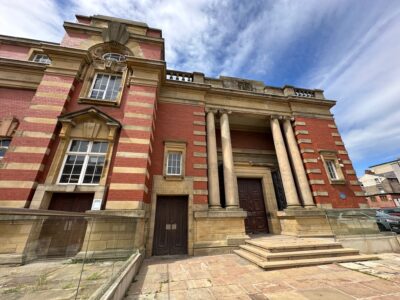Do you remember The Comrades Club at Adelaide Street in central Blackpool? Now demolished after being ravaged by fire, it was once a locally important building. And one of the four founding groups of today’s British Legion.
The site was used as a materials store while the new Winter Gardens conference centre was built. Now, it’s an empty plot.
In September 2020 we took a walk around the outside of the Winter Gardens. At 11.01 in this video you’ll see the site –
Enjoyed this video? Why don’t you subscribe to our Visit Fylde Coast YouTube channel – make sure you don’t miss out!
But the building had an interesting history, taking us way back into Blackpool’s past. Join us to find out more…
Blackpool Comrades Club
The Blackpool branch of the Comrades of the Great War Club formed on 10 October 1917.
Until 1919, the club met at 16, Central Road with monthly meetings held at the Free Library on Queens Street.
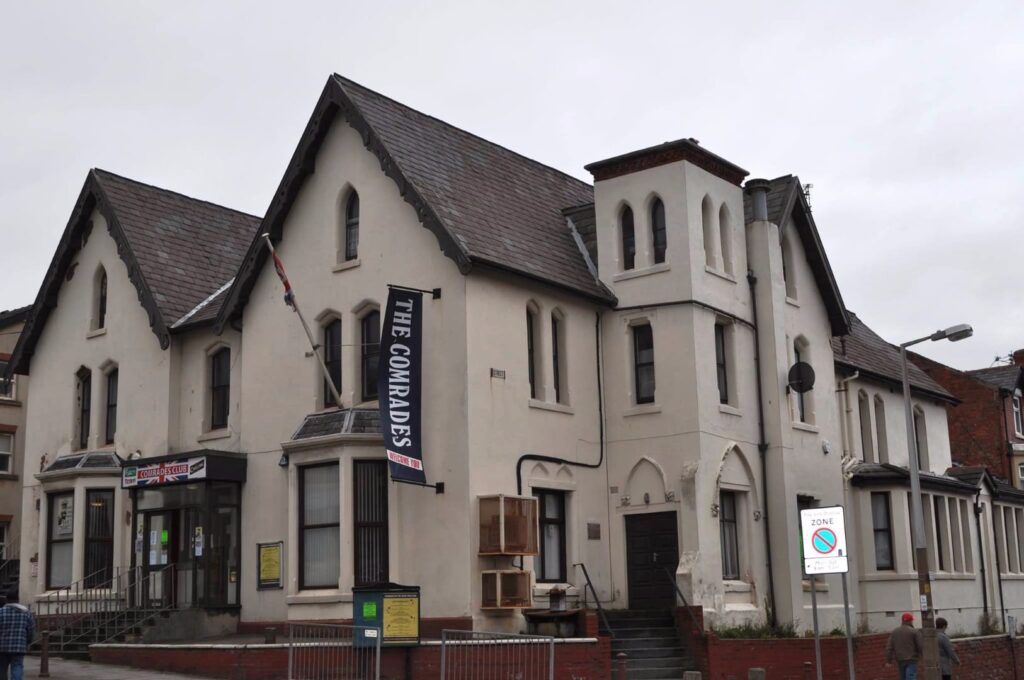
The minutes of the committee meeting of 30 September 1919 discuss the building on Adelaide Street. The report states that the lower part of the premises was to be made into a lounge, bar and billiard room.
It was 24 January 1920 when the Adelaide Street building opened as the Comrades of the Great War Club, by the 17th Earl of Derby.
The first president of the Comrades Club was Major Leonard Greenham Star Malloy. Major Leonard was born in Ireland and educated as a Medical Doctor at Trinity College, Dublin. Commissioned in 1901 as a Lieutenant in the Duke of Lancaster’s Own Yeomanry, he was awarded the Distinguished Service Order in 1917. After becoming MP for Blackpool in 1922, he eventually owned practices in Harley Street and Monte Carlo. His obituary in The Times in 1937 describes Major Malloy as “one of the best known doctors in the north of England.”
The Comrades Club 1914-19 War Memorial
This memorial was erected by the members of the Blackpool branch of the comrades of the Great War. It’s in memory of those who made the supreme sacrifice between 1914-1919.
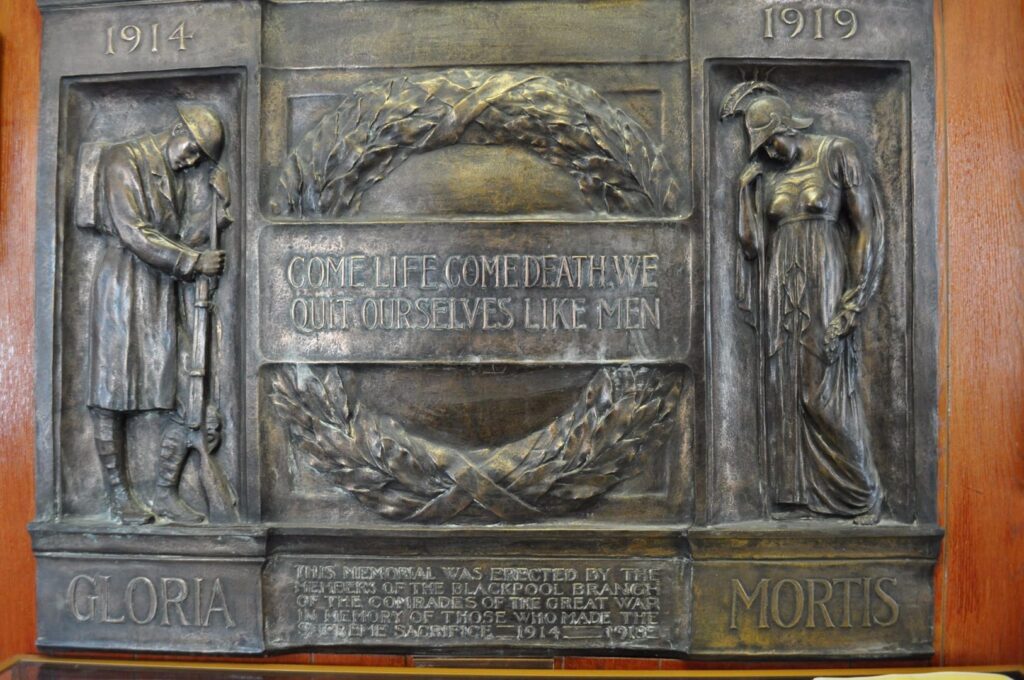
Blackpool Comrades FC 1921-22
The Clubs football team must have been nimble footed, as seen in this commemorative certificate.
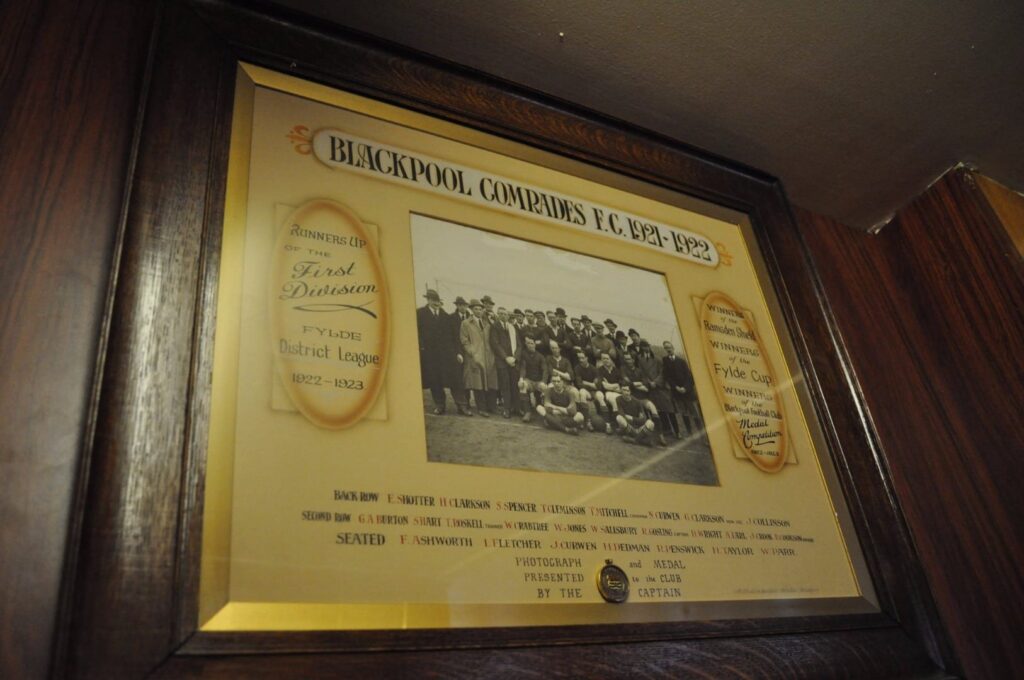
The certificate proudly proclaims ‘Runners up of the First Division Fylde District League 1922-23’. The Comrades Club Football Club are also winners of other medals in 1922-23, including:
- the Ramsden Shield,
- winners of the Fylde Cup
- and winners of the Blackpool Football Club Medal Competition.
What were Comrades of the Great War Clubs?
In 1917 the ‘Comrades of the Great War Clubs’ were formed by the 17th Earl of Derby. That was George Edward Villiers Stanley, also known as Lord Stanley.
Lord Stanley’s father, the 16th Earl of Derby, was the MP for North Lancashire from 1865 to 1885 (of which Blackpool was then part). He became Blackpool’s first MP.
The building of Stanley Park in Blackpool provided employment for returning soldiers and is named after the 16th Earl. It was opened in 1926 by his son.
‘Comrades of the Great War Clubs’ were a non-political association. They represented the rights of ex-service men and women who’d served or been discharged from service during World War One.
There were originally four different ex-service associations:
- The National Association of Discharged Sailors and Soldiers
- The British National Federation of Discharged and Demobilized Sailors and Soldiers
- The Comrades of The Great War
- The Officers’ Association
In 1921 they were all amalgamated into one to form the Royal British Legion.
The Grammar School – before the Comrades Club
Today’s generation always knew this building as The Comrades Club. But before that it had another important and interesting life, as a school.
Local historian Ann Lightbown had researched some of the early private schools in Blackpool. Here’s some of the information she shared in a Blackpool Gazette article, back in 2014.
In the 19th and early 20th century, there were many private boys’ schools in Blackpool, as well as schools and academies for young ladies. Some lasted for only a few years. Others changed their names or were amalgamated, and many moved premises.
Children were sent to these schools from all over Lancashire and even more further afield. So a lot of them were also boarding schools.
How The Grammar School Began
Thomas Sankey came to Blackpool about 1887 and took over the privately-owned boys’ Collegiate School at the north western corner of Coronation Street and Adelaide Street. Previously, it was owned by educationalist Ebenezer Leigh. He’d been running an already established school there since the 1870s.
In 1893 Thomas Sankey moved his school further up Adelaide Street to Frogmore at number 116. Frogmore was the more easterly of a pair of large semi-detached houses, with grounds at the rear.
He soon advertised that he was changing the name of his school to Blackpool Grammar School.
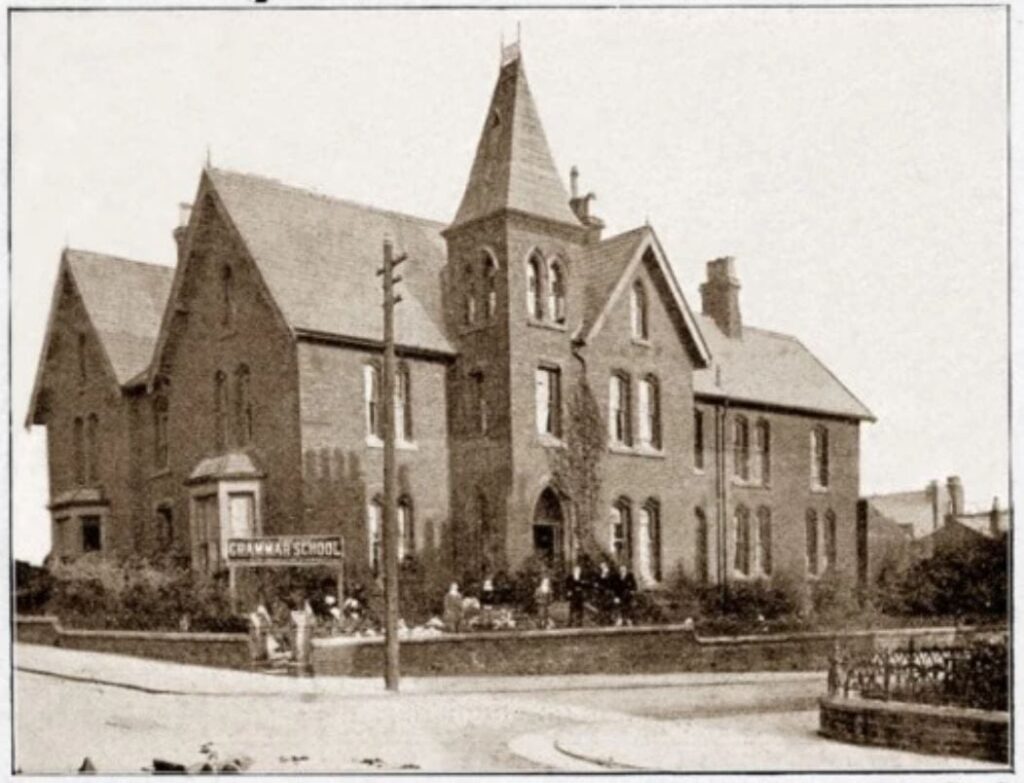
You can clearly see the shape of the Grammar School buildings in the Comrades Club…
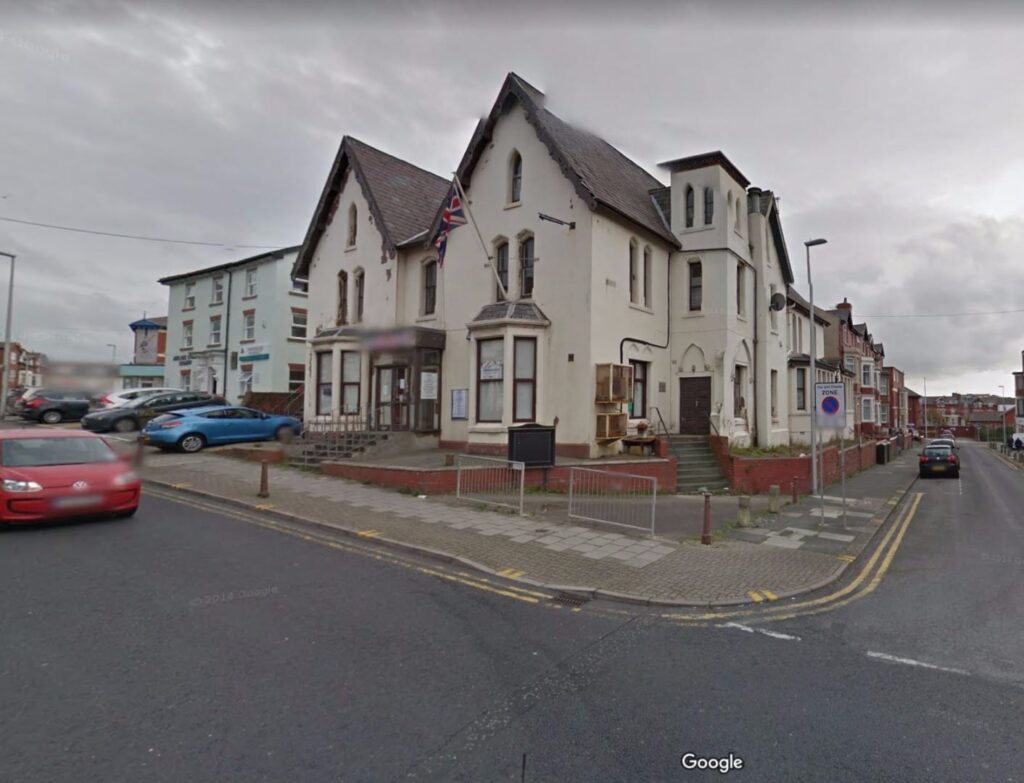
The right hand house, Rougemont, was a private school for young ladies. But by 1900 that establishment had moved to Reads Avenue, allowing Sankey to expand into the vacated premises.
This advert is from 1909…
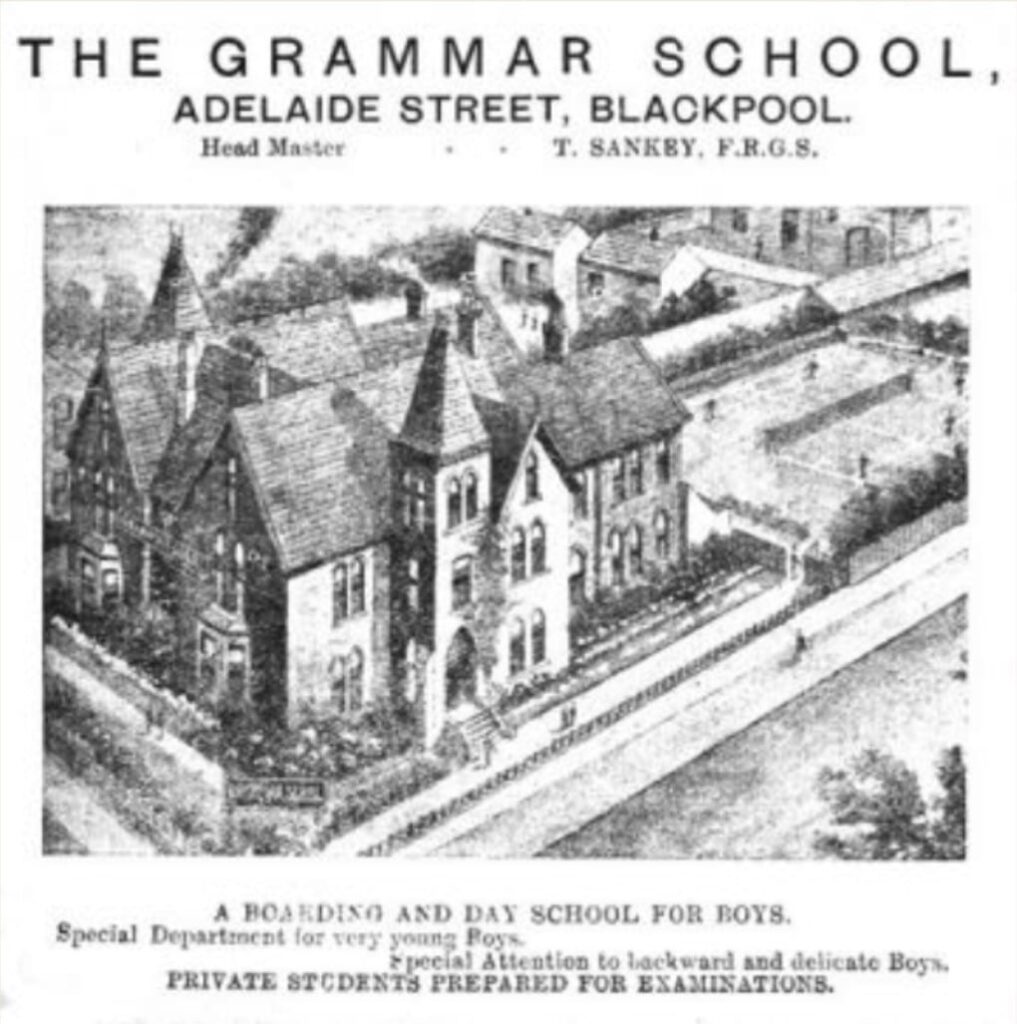
“The Grammar School, Adelaide Street, headmaster T. Banksey. A boarding and day school for boys with a ‘special department for very young boys’ (what we would no doubt today call a nursery). And ‘special attention to backward and delicate boys’. Private students prepared for examinations.
Sankey died in 1910 and the eldest of his seven children temporarily took over the running of the school. His son, a curate at Pendlebury, ran it until the summer holidays of that year. Then, from summer 1910 onwards, adverts for The Grammar School disappeared.
The End of Blackpool Comrades Club
Blackpool Comrades Club went into administration in January 2014 and closed for the final time on 15 November 2014. The Club tried to find a new investor to take on the building and maintain its local importance.
However, that wasn’t to be. In the early hours of 13 July 2017 a serious fire swept through the building. After burning for several hours it left the building structurally unsafe. A sad end to an historic building.
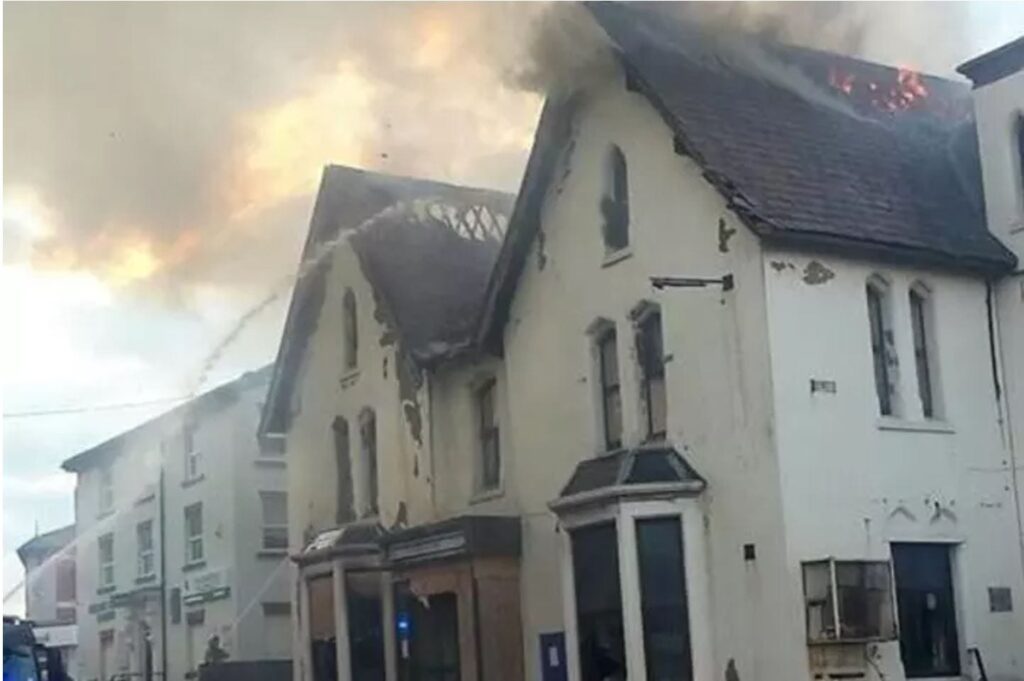
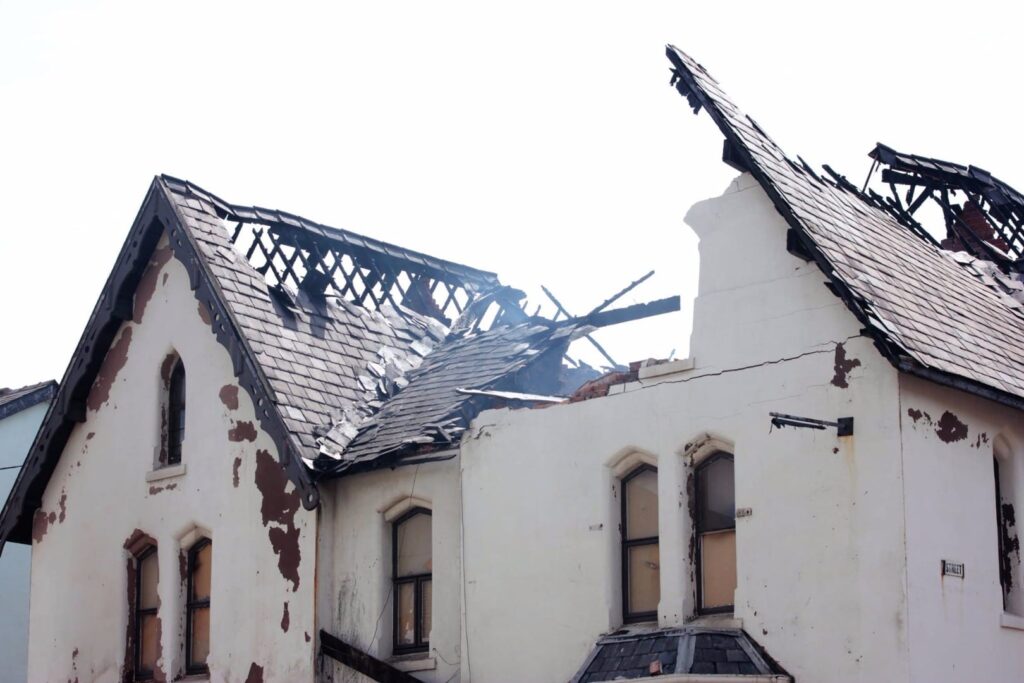
For many years it was open as part of the Heritage Open Days tours. The last time that you could go inside as part of this national event was in September 2014.
While you’re here…
Go to the homepage of the Live Blackpool website for the latest updates.
Love the Fylde Coast? Sign up for your email newsletter. Packed full of interesting things it arrives in your inbox all 52 weeks of the year.
Join us on Facebook at our Visit Fylde Coast Facebook Group and follow us on Twitter @visitFyldeCoast
Plus hundreds of videos to watch on our YouTube channel – from all over the Fylde Coast!
Booking a stay? Pick a safe, clean and legal place to stay, at the very best price. Book with the Visit Fylde Coast and StayBlackpool guide.


